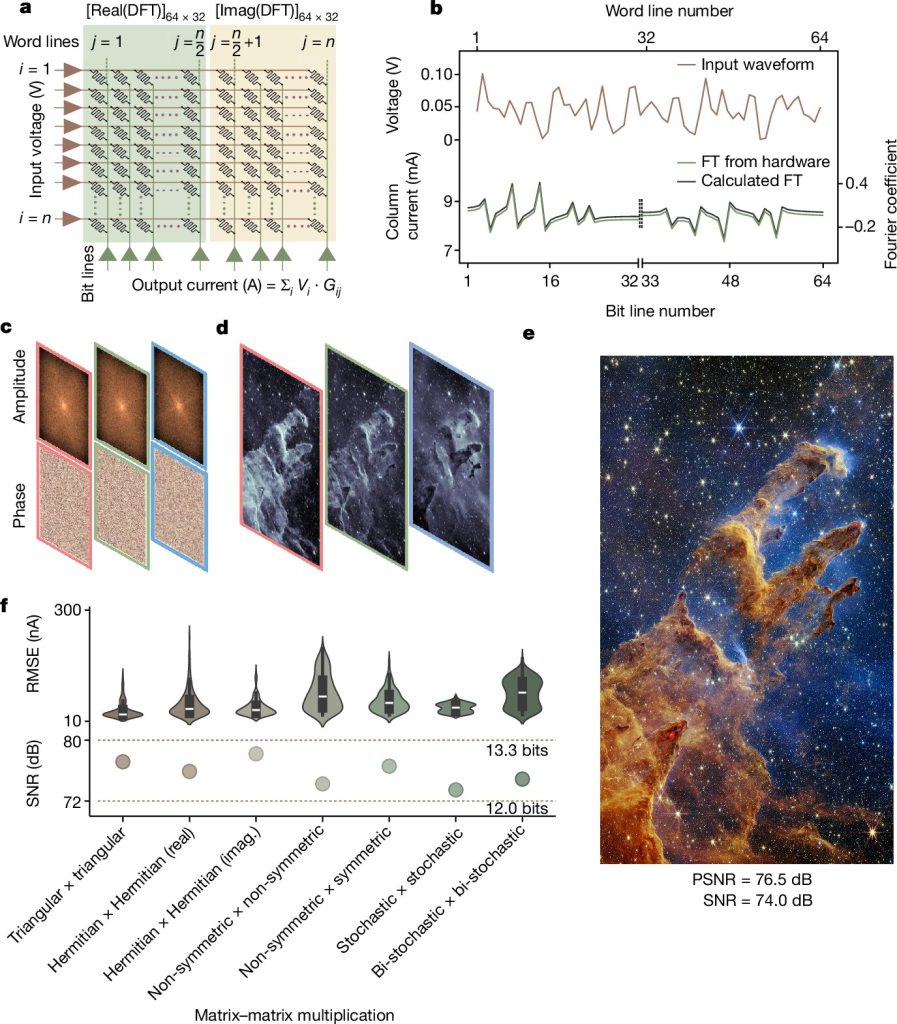Traditional computing systems, primarily based on digital electronics, are facing increasing limitations in energy efficiency and computational speed. As silicon-based chips near their performance limits, there is a growing need for new hardware architectures to support complex tasks, such as artificial intelligence (AI) model training. Matrix multiplication, the fundamental operation in many AI algorithms, consumes vast amounts of energy and time on digital computers, limiting the democratization of AI tools on personal devices. This bottleneck requires a fresh approach to computing platforms that can handle AI tasks more efficiently.
Current approaches to address these challenges rely heavily on large data centers with resource-intensive hardware, making AI model training inaccessible to small-scale users. Although neuromorphic computing—an approach inspired by how the human brain processes information—has been explored for over a decade, it has faced significant technical hurdles. Neuromorphic platforms developed so far have been unable to fully utilize the potential of analog computing systems, particularly in accessing the extensive number of intermediate memory states available in molecular structures.
A team of researchers at the Indian Institute of Science (IISc) has made a breakthrough in neuromorphic computing by developing a brain-inspired analog computing platform capable of storing and processing data in 16,500 distinct conductance states within a molecular film. This newly developed platform marks a major advancement, surpassing the binary nature of traditional digital computers that are limited to two states (high and low conductance).
Led by an Assistant Professor from the Centre for Nano Science and Engineering (CeNSE) at IISc, the team designed a molecular system where ions and molecules within the material film could access a much larger range of memory states. Using precise voltage pulses, the team mapped these molecular movements to unique electrical signals, effectively creating a “molecular diary†that can be used for efficient data storage and processing. This approach drastically reduces the energy and time required for matrix multiplication, the core operation in AI tasks, making AI acceleration faster and more efficient.
To demonstrate the capabilities of their neuromorphic platform, the researchers used their system to recreate NASA’s iconic “Pillars of Creation†image from data collected by the James Webb Space Telescope. Unlike traditional systems that would require extensive energy and time, the IISc team’s platform was able to complete this task using only a tabletop computer, showcasing both the speed and energy efficiency of their technology.
A key challenge faced by the team was accurately characterizing the large number of conductance states. The researchers developed a custom circuit board capable of measuring voltages as small as a millionth of a volt, allowing them to trace individual states with unprecedented precision. This level of accuracy is critical to the platform’s success, enabling it to perform highly precise calculations similar to the way the human brain processes information.
The neuromorphic platform’s ability to store and process data within the same location, akin to human brain functionality, marks a significant advancement in AI hardware. It not only improves energy efficiency but also speeds up the execution of complex AI tasks. While traditional systems rely on separate memory and processing units, leading to energy inefficiency, the IISc platform integrates both functions, providing a more streamlined and power-efficient approach. The reduction in time and energy consumption for tasks like matrix multiplication offers substantial benefits for AI training, especially for energy-constrained environments like personal devices.
This platform represents a groundbreaking step in AI hardware development. By overcoming the limitations of traditional digital computers, the platform could democratize AI by enabling complex tasks such as training large language models to be performed on smaller, more accessible devices. The team’s ongoing efforts to develop an indigenous neuromorphic chip hold promise for revolutionizing industrial and consumer applications.
Check out the Paper and Details. All credit for this research goes to the researchers of this project. Also, don’t forget to follow us on Twitter and join our Telegram Channel and LinkedIn Group. If you like our work, you will love our newsletter..
Don’t Forget to join our 50k+ ML SubReddit
The post IIISc Researchers Developed a Brain-Inspired Analog Computing Platform with 16,500 Conductance States in a Molecular Film appeared first on MarkTechPost.
Source: Read MoreÂ


